From Pitch to Payout: 12 Essential processes of Startup Funding
Land the Funding You Deserve with This Proven 12-Step Framework
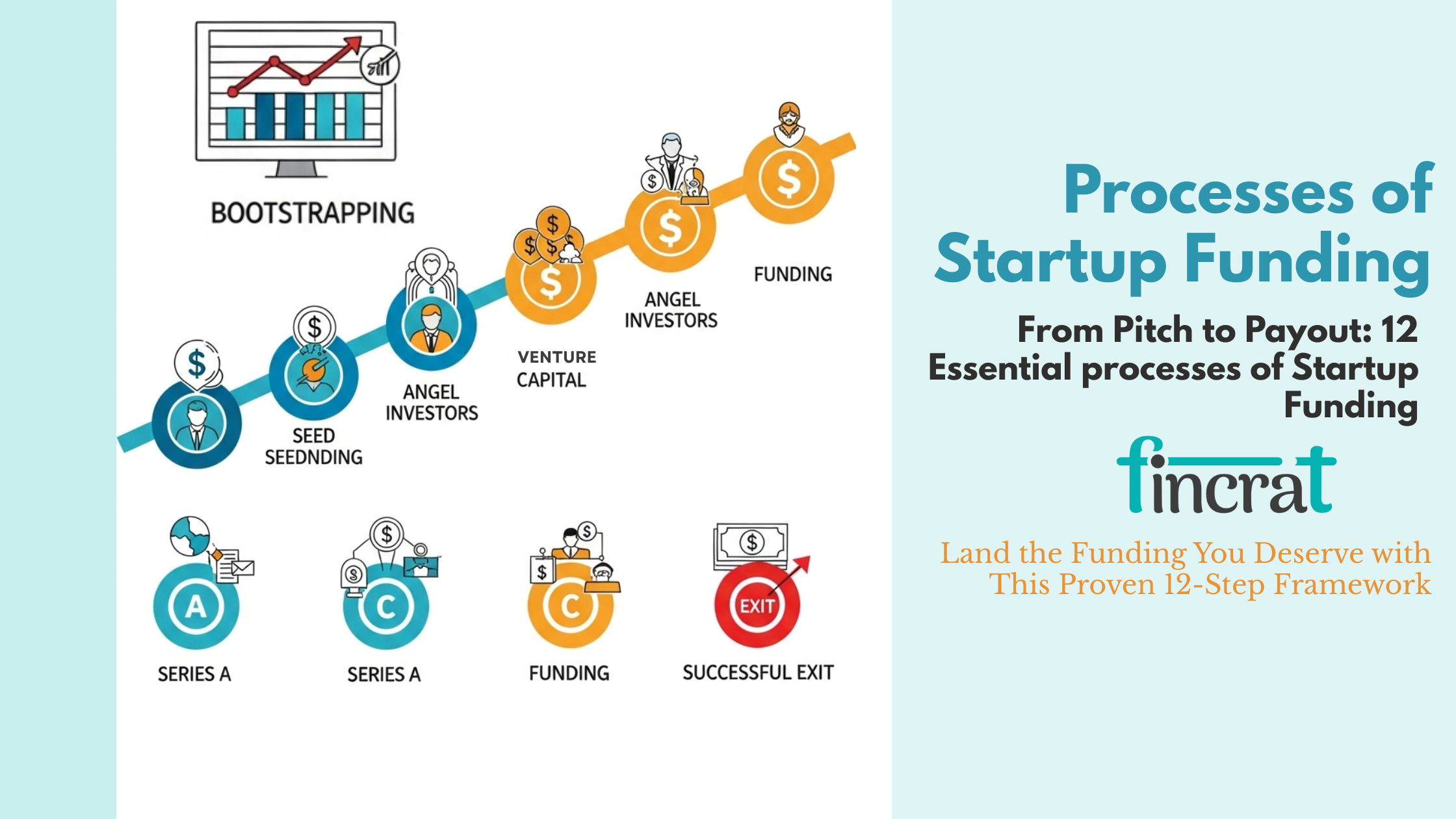
Every successful startup begins with an idea—but ideas alone don’t build businesses. What fuels innovation, product development, team expansion, and customer acquisition? The answer is funding. Whether you're a first-time founder or a serial entrepreneur, mastering the startup funding journey is critical.
In this guide, we’ll walk you through the 12 essential processes of startup funding, from early validation to post-investment execution. These steps serve as a blueprint to raise capital, attract the right investors, and grow your business with confidence.
12 Essential Processes of Startup Funding
The startup funding process is a structured journey that helps founders move from a raw idea to a funded, scalable business. While not every startup follows the exact same route, the following 12 essential processes reflect a typical and strategic funding lifecycle.
- Idea Validation
- Business Plan & Financial Projections
- Pitch Deck Preparation
- Investor Research & Targeting
- Initial Outreach & Networking
- Investor Meetings & Pitches
- Due Diligence by Investors
- Term Sheet Negotiation
- Legal Agreements (e.g., SSSHA)
- Fund Transfer
- Post-Funding Governance & Reporting
- Execution & Milestone Tracking
1. Idea Validation

- The idea validation process is how a startup founder experiments with their business idea to see whether it solves a genuine problem in the market.
- Idea validation is concerned with establishing whether the startup's solution is viable, feasible, and desirable.
- Risk Mitigation: Idea validation serves to reduce the risk of creating a product that nobody desires.
- It allows startups to pivot or enhance their product based on actual feedback.
- Investor Confidence: Startups that are able to demonstrate strong validation stand a better chance of raising funding since investors seek assurance that the product fulfills an actual market demand.
Purpose idea validation:
- Validate the startup's value proposition.
- Determine target customer segments.
- Make sure there is enough demand for the product or service before committing ample time and money.
- By CB Insights,30%- 42% of startups will fail due to a lack of demand in the market for their product, so idea validation is important.
- Founders can gauge demand and validate their idea by using surveys, customer interviews, or landing pages.
- Example: A software firm that builds a project management tool may employ a survey or interview a small group of potential customers to ascertain if there is demand for their product prior to creating it.
2. Business Plan & Financial Projections
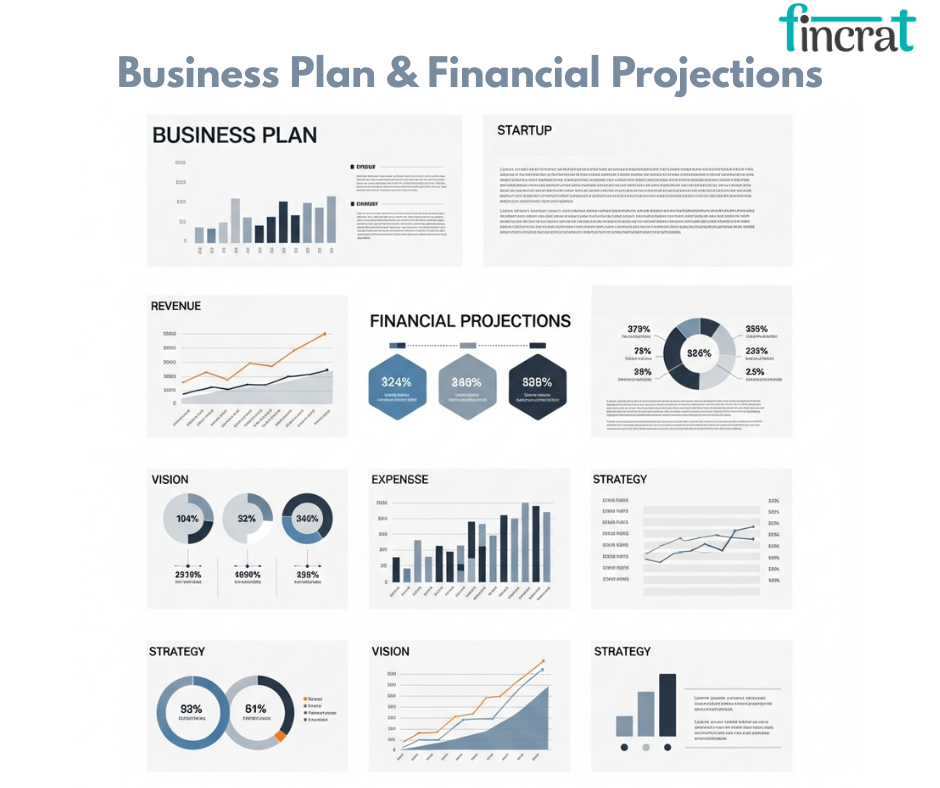
- A startup's objectives, strategies, and tactics to reach them are spelled out in a business plan.
- It contains thorough financial forecasts, market analysis, business model, and competitive analysis.
- The financial projections indicate to potential investors how the business intends to generate profits, its cost, and growth.
- Direction: A business plan gives clear direction to founders to enable them to make informed decisions.
- Investor Confidence: Investors utilize financial projections in order to estimate the potential for profitability and growth of the startup.
- Sustainability:Enables the startup to prepare both short-term and long-term financial requirements, thereby minimizing the likelihood of cash starvation.
Purpose Business Plan & Financial Projections :
- Develop a business blueprint.
- Create a strategy for making revenue and controlling costs.
- Evidence of the money-making capacity of the business to prospective investors. This is an important tool that can be used to raise venture capital.
- More than 40%-50% of startups collapse because of bad financial planning or mismanagement of the resources.
- Financial projections normally last between 3-5 years, including revenue, gross profit, operational costs, and so on.
- Example: An e-commerce startup company could plan its finances, forecasting the number of products it is likely to sell, its estimated profit margin, and its break-even point.
3. Preparation of the Pitch Deck

- A pitch deck is a short presentation (often in PowerPoint or PDF format) that entrepreneurs use to present their startup concept to prospective investors.
- It usually contains details of the problem, solution, market opportunity, business model, traction, and team.
- First Impression: Investors tend to make snap judgments based on the pitch deck.
- A good pitch deck has the ability to stand out a startup from a million other companies competing for attention.
- Clarity: It enables founders to put ideas into their heads in a coherent and crystal-clear manner to express them to investors.
Purpose of pitch deck :
- Convey the vision and business model of the startup.
- Make investors interested.
- Give a brief description of the opportunity.
- Investors will spend 3 minutes on average looking at a pitch deck to determine if a meeting should be pursued.
- Storytelling is essential in pitch decks, and those that tell a good story are more likely to raise funds.
- Example: Airbnb's 2009 pitch deck raised $20,000 from investors, and included a straightforward yet effective articulation of the market need, product, and growth plan.
4. Investor Research & Targeting
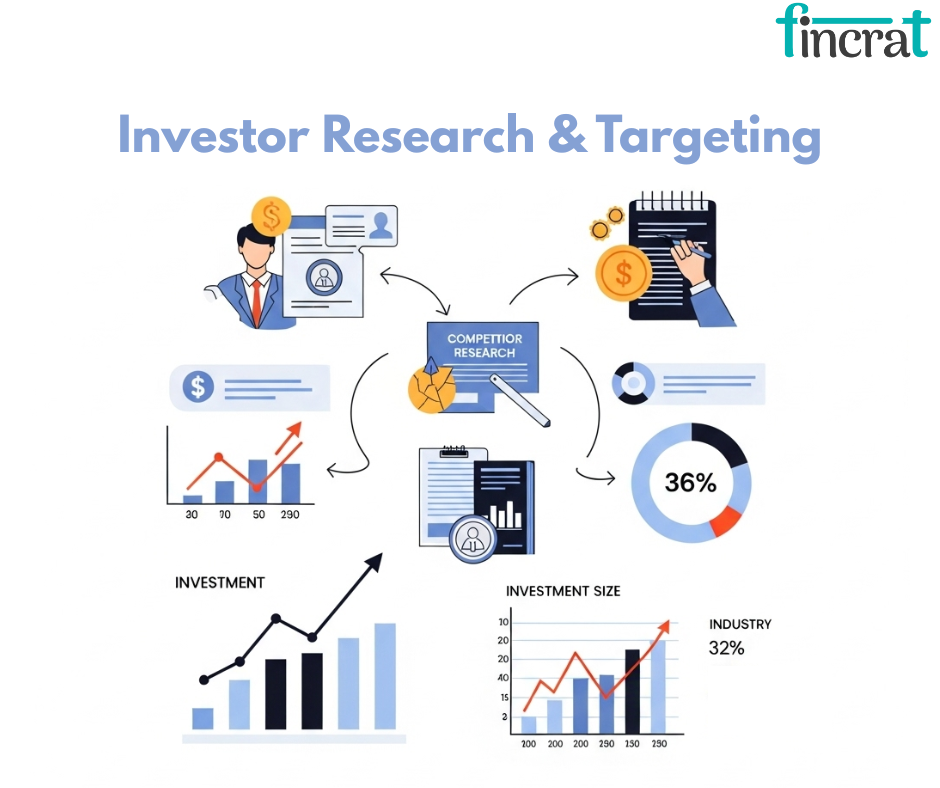
- Investor targeting and research are about finding and ranking the ideal investors for your startup.
- It is about locating investors that are a good fit from their prior investments, knowledge, and interests.
- Investor Fit: Investors who know the market and have prior experience in your sector are more likely to provide valuable insights and be dedicated to your startup.
- Strategic Partnerships: Accurate targeting can lead to more than capital; it can result in mentorship, networking, and partnerships opportunities.
Purpose Investors Research and targeting :
- Engage with investors with a track record of investing in businesses within your industry or field.
- Position your pitch to align with the investor's interests and niche.
- Establish long-term connections with investors most likely to invest in your startup.
- VCs generally specialize in specific stages (seed, Series A) and industries (tech, healthcare), so targeting the right type of investor increases your chance of success.
- AngelList and Crunchbase are useful platforms for researching potential investors.
- Example: A health-tech startup would focus on investors who specialize in healthcare innovations, such as those who have previously funded digital health companies or medical devices.
5. Initial Outreach & Networking

- Initial networking and outreach encompass the action of reaching out to likely investors, both online and offline.
- These may involve cold emails, LinkedIn messages, introductions by mutual contacts, as well as networking events such as demo days.
- Access to Funding: Investors also like to fund founders they know or have come recommended.
- Warm Introductions: Founders who leverage mutual contacts have a higher success rate than those who contact investors cold.
Purpose of initial outreach & Networking:
- Introduce the startup to potential investors.
- Begin building relationships with the right individuals in the investor community.
- Obtain meetings or conversations to pitch the business.
- A warm intro (introduction through a mutual connection) increases the chances of securing a meeting by 4x.
- Networking events, such as Angel Capital Association events, help startups meet the right investors in a more structured environment.
- Example: A founder might attend a startup conference where they meet a venture capitalist interested in their industry. After a brief conversation, the founder gets an introduction to the investor via the event organizer.
6. Investor Meetings & Pitches
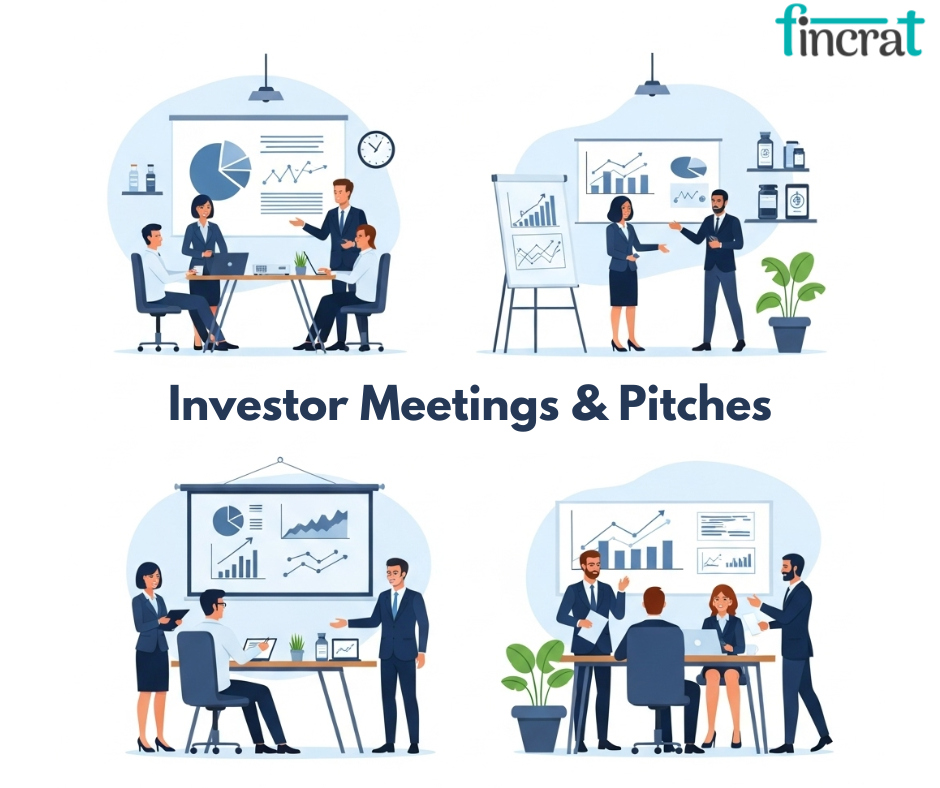
- Investor meetings and pitches provide the startup's founder with a chance to share their idea, business model, and traction with investors in an official meeting.
- They can be in the form of one-on-one meetings, pitch events, or demo days.
- Investor Evaluation: Investors utilize these meetings to evaluate the business opportunity, the founder's execution capability, and the potential of the team.
- Building Trust: A successful pitch can create trust with investors and build a long-term relationship.
Purpose Investor meetings & pitches :
- Highlight the vision of the startup and growth potential.
- Put investors' concerns or questions at ease.
- Raise funds for the business.
- Typically, VCs meet 40-50 startups to invest in one of them.
- Founders can anticipate pitching at least 5-10 investors before getting funded.
- Example: At a demo day, a founder showcases his business, describing the problem, solution, traction, and team, fielding investors' questions, and ultimately receiving a Series A investment.
7. Investors' Due Diligence

- Due diligence is an exhaustive examination by investors prior to investing in a startup.
- It's a process of checking the startup's assertions about its financials, legal status, market, product, and team.
- Risk Management: Investors are prevented from making expensive blunders and incurring losses by revealed hidden risks.
- Building Trust:It offers transparency, satisfying both parties that the transaction is genuine and founded on authentic information.
- Investors' Purpose Due Diligence:
- Validate the business opportunity.
- Establish potential risks and ensure the investment is solid.
- Verify the information delivered by the startup is accurate.
- Due diligence takes 2-3 months and consists of checking financial documents, intellectual property rights, customer agreements, and legal contracts.
- 25%- 30% of transactions collapse during due diligence because of red flags or inconsistencies in the startup's assertion.
- Example:If a startup asserts that they have 10,000 active users, due diligence will include checking this through analytics data, user agreements, or customer interviews.
8. Term Sheet Negotiation

- A Term Sheet is a preliminary, non-binding document that sets out the general terms and conditions of an expected investment between an investor and a startup.
- It acts as the precursor to the more advanced and official legal documents to be constructed subsequently, like the Shareholders' Agreement and Share Subscription Agreement.
- A term sheet encapsulates the main terms concerning valuation, equity split, governance rights, and other significant conditions of investment.
- The main function of a term sheet is to make sure that the startup and the investor are on the same page with respect to the key terms of the deal before they go into thorough negotiations and legal paperwork.
- It acts as a guide for both sides to ensure understanding and agreement about the key terms to avoid the possibility of misunderstanding in the future.
- Clarity of Terms: Defined terms avoid future misunderstandings and conflicts.
- Investment Conditions: The term sheet includes conditions that can impact control, exit, and future funding rounds.
- Valuation, liquidation preferences, board structure, and anti-dilution provisions are the key terms.
- 1-2 weeks are normally needed to negotiate a term sheet.
9. Legal Agreements (e.g., SSSHA)- Share Subscription and Shareholders' Agreement

- Startup financing legal agreements are contract documents that are binding, formal, and set out the rights, duties, and obligations of both investors and startup founders once they have agreed to an investment arrangement.
- The most important of these is the SSSHA, or Share Subscription and Shareholders' Agreement. It is two vitally important agreements combined:
- Share Subscription Agreement (SSA) – Defines the conditions on which investors commit to subscribing (purchasing) new shares in the company.
- Shareholders' Agreement (SHA) – Establishes how the company will be managed, governed, and how shareholder interests are preserved.
- The SSSHA collectively is the legal framework of the investment transaction.
- Typical SSSHAs are usually 20–50 pages in length, depending on the deal's intricacy.
- The phase of legal agreements involves the completion of the Share Subscription and Shareholder's Agreement (SSSHA) that establishes the rights and obligations of the startup and its investors.
- The legally binding agreement regulates issues like voting rights, equity holdings, and exit.
- Legal Protection: Legal agreements properly executed protect both founders and investors in the event of a dispute or disagreement.
- Clarity: Unambiguous legal language gives assurance and prevents future disputes regarding ownership, decision-making, and exit options.
Purpose legal Agreements :
- Legalize the Investment: Converts the agreed terms of the term sheet into contractual legal obligations.
- Secure Interests: Safeguards the interests of both investors and founders by precisely defining control, governance, shareholding rights, and procedures.
- Avoid Disputes: Creates a legal framework to settle future disagreements, exits, share transfers, or company policy.
- Facilitate Compliance: Guarantees adherence to corporate legislation and investor protection regulations.
- SSSHA most commonly incorporates pre-emption rights, vesting plans, and liquidation priorities.
- Legal fees involved in preparing these agreements vary from $5,000 to $15,000 based on complexity.
- More than 50%-60% of startups indicate that ambiguous legal rights between shareholders caused internal conflicts in subsequent stages.
10. Fund Transfer
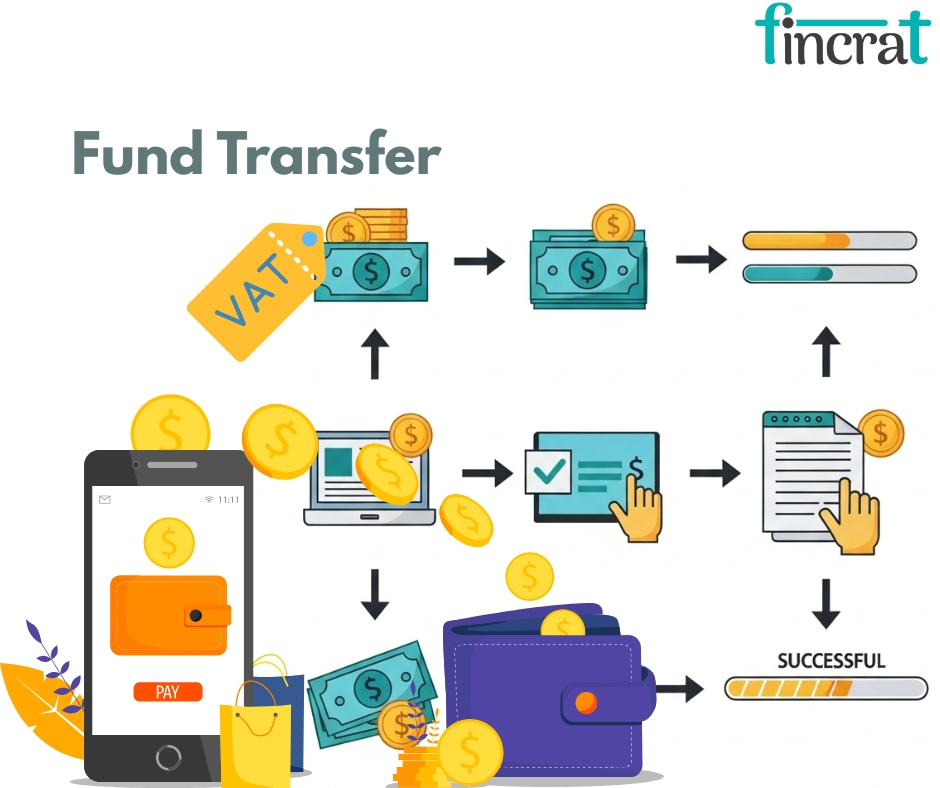
- Fund transfer is a process where the amount of investment agreed on is actually transferred to the startup's account, which signals the commencement of the investor's contribution.
- Execution of Plans: It allows the startup to start its operations with the capital that it requires for growth.
- Investor Trust: A clear transfer process solidifies the trust of the investor in the startup.
Purpose Fund Transfer :
- Supply the necessary capital so that the startup can implement its plans.
- Ensure that both parties comply with the investment agreement terms.
- Funds are usually remitted through wire transfer to the business bank account of the startup.
- Investors can send funds in tranches or installments based on milestones.
- Example: A Series A investor makes a $2M payment to a startup in two tranches: first tranche for initial team growth, and second tranche upon achieving the user acquisition milestone.
11. Post-Funding Governance & Reporting
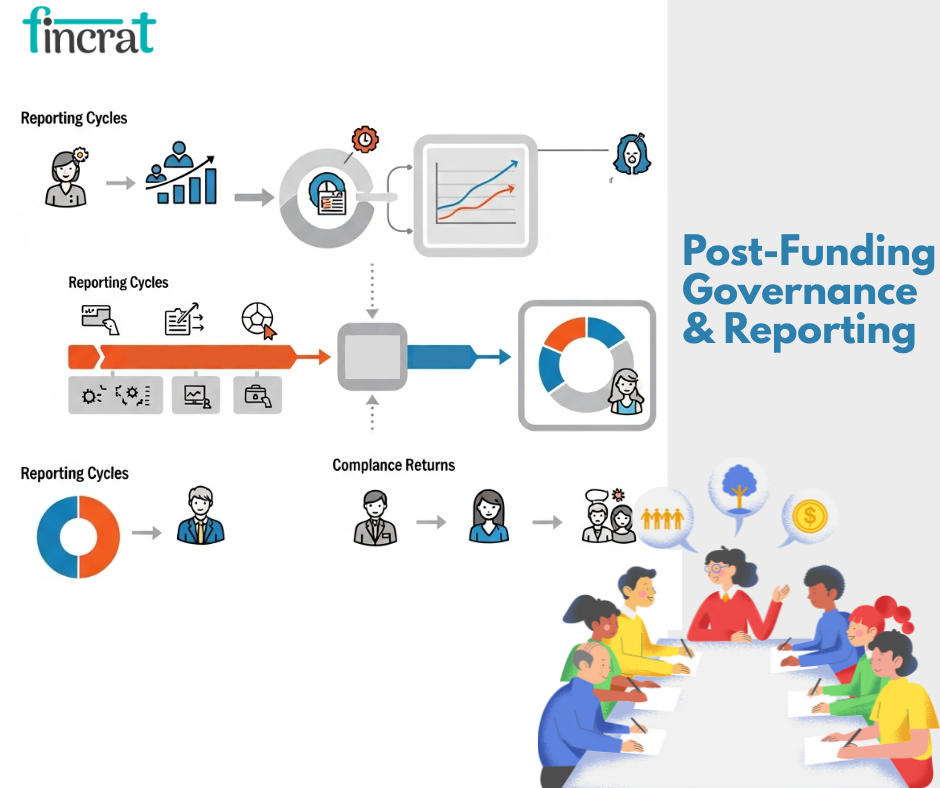
- Post-funding, startups will need to undertake periodic governance and reporting, keeping investors informed of company performance, financials, and progress toward major milestones.
- Trust & Communication:Keeping them informed builds trust and makes investors feel invested in the growth of the startup.
- Accountability: Reporting holds the startup accountable for following the plan and deploying the funds as planned.
Purpose Post-funding governance & reporting :
- Keep investors informed.
- Keep the startup on target to achieve its business objectives.
- Investors normally want to receive quarterly or monthly financial reports, including revenue, expenses, and KPIs.
- Startups might be asked to provide detailed board meeting minutes and audit reports.
- Example: A SaaS startup sends out a quarterly report to investors reporting on revenue growth, customer churn, and the adoption of new product features.
12. Execution & Milestone Tracking

- Execution is the process by which the startup executes the business plan, whereas milestone tracking tracks progress towards major goals and assesses it.
- Investor Confidence: Effective execution proves that the startup has the capacity to achieve its goals and scale up.
- Strategic Focus: Milestone tracking maintains the founders' attention on the most important activities required to scale.
Purpose Execution & Milestone Tracking :
- Ensure the startup achieves targets and moves closer to its vision.
- Monitor performance to gauge success and adjust course if needed.
- Milestones must be SMART (Specific, Measurable, Achievable, Relevant, and Time-bound).
- KPIs such as user growth, revenue, and product releases are monitored.
- Example:A tech company may establish a milestone to add 5,000 new users within the next quarter and monitor the progress of efforts to build user acquisition so that they remain on track.
Final Thoughts: Master the Process, Secure the Funding
Startup funding isn’t just about delivering a compelling pitch—it’s about mastering the entire process with preparation, precision, and strategic foresight.
From validating your idea and crafting a solid business model to legal documentation and investor reporting, every stage plays a crucial role in building investor trust and driving long-term success.
Treat your funding journey as a marathon, not a sprint.
Start building relationships early, stay transparent throughout, and use each stage as an opportunity to validate your assumptions, align with your vision, and execute with confidence.
The founders who secure funding aren’t just great storytellers—they’re great strategists.
"The money follows the method—master the process, and the funding will come."

